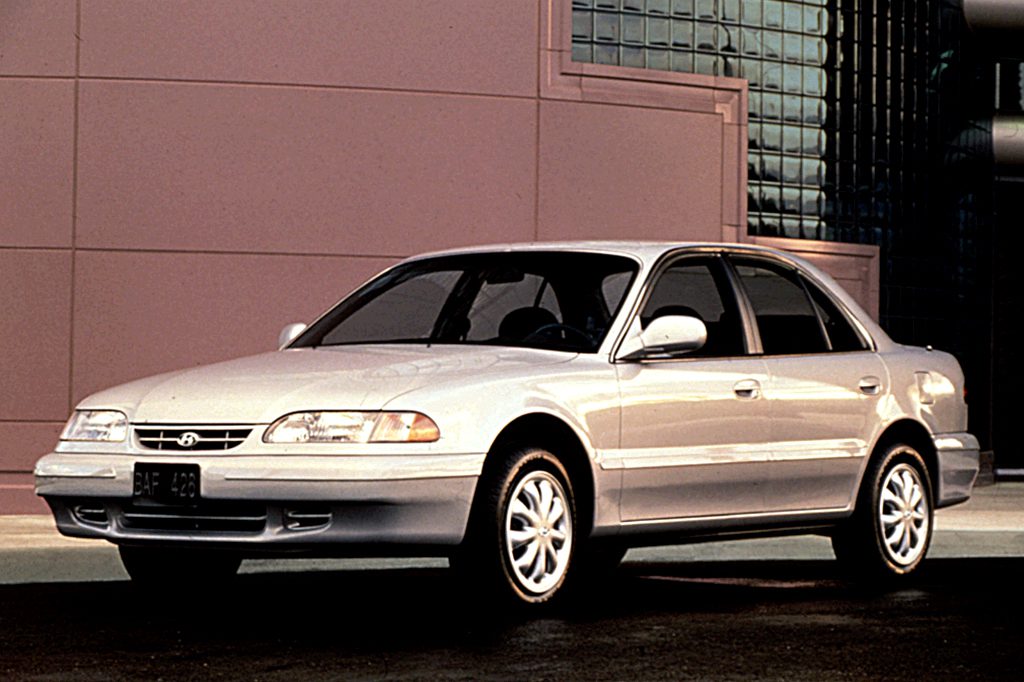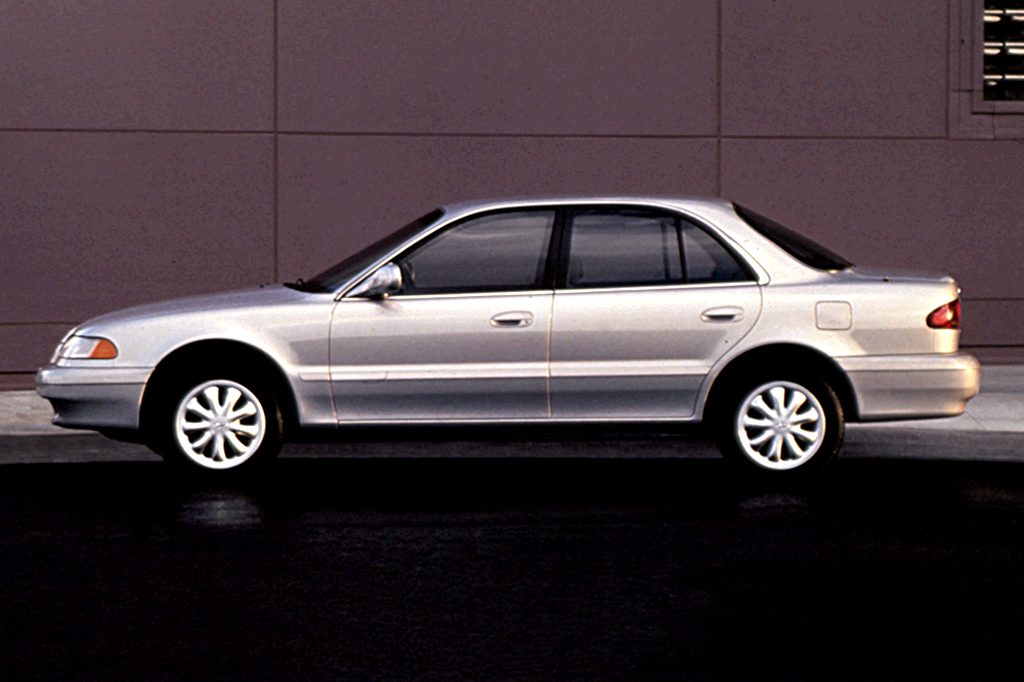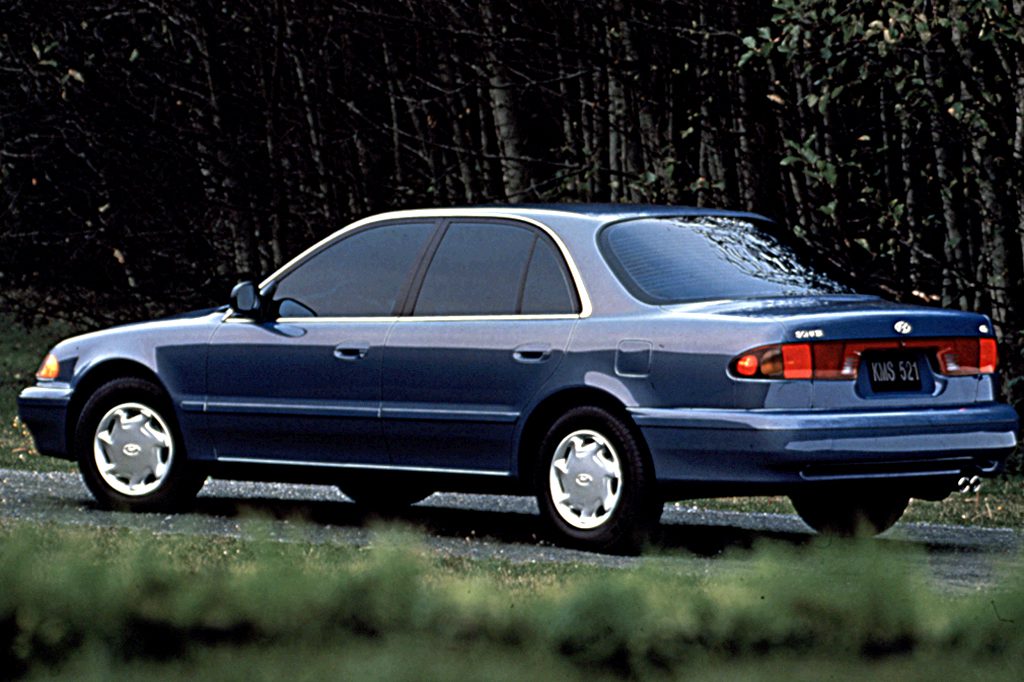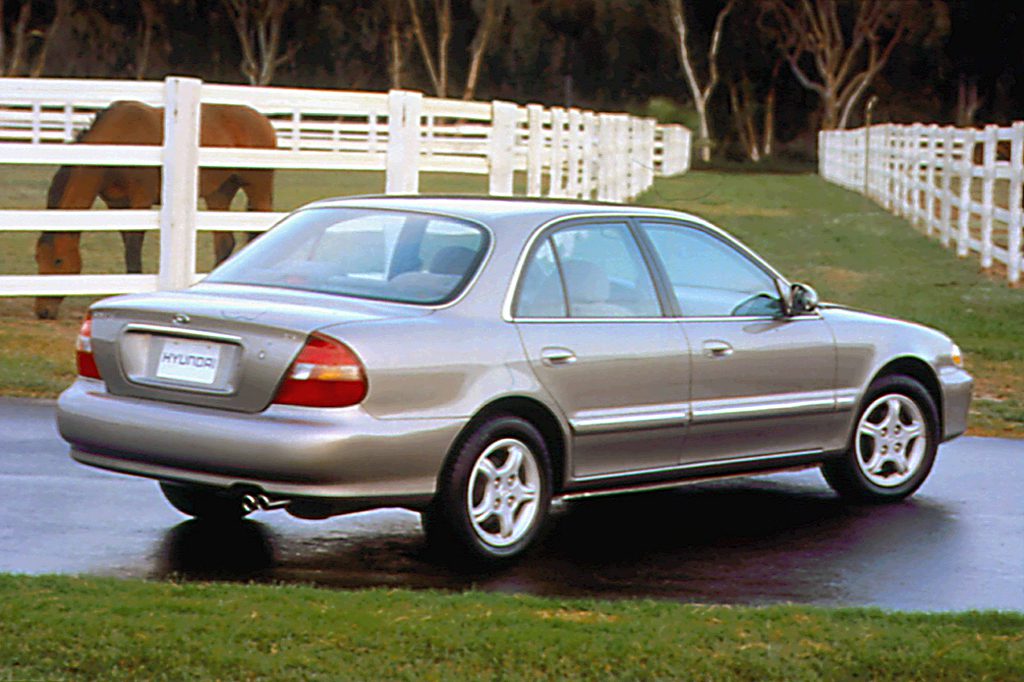| Midsize car; Built in South Korea |
|
|
| Good condition price range: $1,300 – $2,000* |

1995 Hyundai Sonata

1995 Hyundai Sonata

1996 Hyundai Sonata

1997 Hyundai Sonata

1997 Hyundai Sonata
| Pros: |
|
| Cons: |
|
Anyone seeking a low-priced family car with plenty of interior space should look over a Sonata before deciding on a purchase. Just don’t expect it to shine above the competition.
Overview
A redesigned Sonata went on sale in spring of 1994 as an early ’95 model, with a longer front-drive chassis, fresh styling, and dual airbags. Base engine was a dual-overhead-cam 2.0-liter 4-cylinder that was substantially revised for 1995 to produce 137 horsepower. A 142-horsepower 3.0-liter V6 was standard on the GLS and optional on the GL. The 4-cylinder could have either a 5-speed manual transmission or 4-speed automatic, while the V6 got only the automatic. Antilock brakes were optional, but only on models with a V6 engine.
Yearly Updates
| 1996 Sonata A split folding rear seatback, previously standard only on the GLS sedan, now was standard on all Sonatas. Models with the V6 got new liquid-filled engine mounts and additional sound insulation. |
| 1997 Sonata Sonatas earned a facelift for ’97. Visual changes included reshaped front and rear body panels, restyled taillamps, a new ovoid vertical-bar grille, reflector headlamps, smoother bumpers, plus new wheels and wheel covers. |
| 1998 Sonata Hyundai’s largest car carried on into 1998 unchanged. Sonata was redesigned for ’99. |
